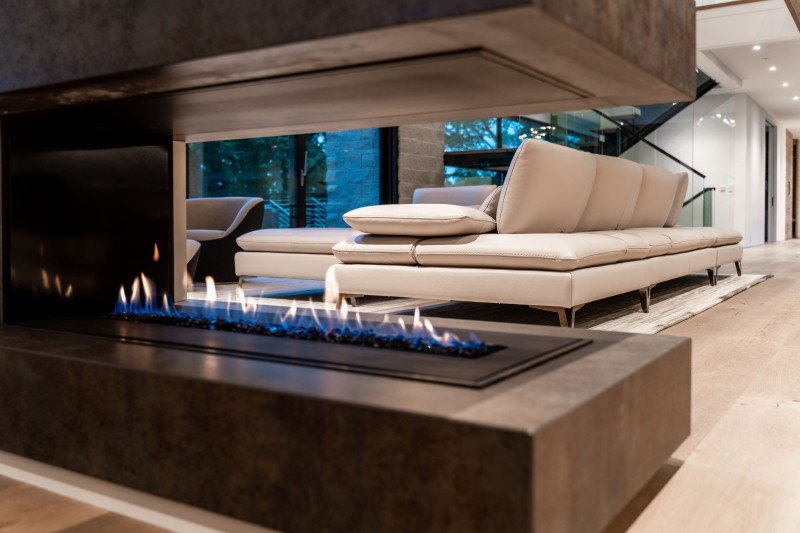10 Things That Everyone Doesn't Get Right About The Word “Energy Efficient Fireplaces For Sale”
Energy Efficient Fireplaces For Sale: A Comprehensive Guide
Over the last few years, the concentrate on energy efficiency in home heating has actually magnified due to rising energy costs and increasing environmental concerns. Energy-efficient fireplaces offer a sustainable option to traditional heating methods, delivering heat and ambiance without the excessive fuel consumption associated with conventional fireplaces. This short article looks into the benefits of energy-efficient fireplaces, checks out the different types readily available, supplies valuable purchasing tips, and answers regularly asked questions.
The Benefits of Energy Efficient Fireplaces
Energy-efficient fireplaces supply various benefits that extend beyond mere heat. Here are some crucial benefits:
Reduced Energy Consumption: These fireplaces consume less fuel while creating a comparable amount of heat, making them cost-effective.
Lower Emissions: With innovative innovation created to burn fuel more totally, energy-efficient fireplaces significantly decrease harmful emissions.
Enhanced Home Value: Installing a modern, energy-efficient fireplace can increase a home's resale value and aesthetic appeal.
Increased Heating Capacity: Many energy-efficient models supply much better heating protection, focusing heat in larger locations compared to traditional options.
Style Versatility: Available in numerous styles, energy-efficient fireplaces can complement any interior decoration design.
Alternative Fuel Options: Many energy-efficient fireplaces can operate on eco-friendly resources such as wood pellets, bioethanol, or gas.
Kinds Of Energy Efficient Fireplaces
Picking the right energy-efficient fireplace for a home depends upon private preferences, area restrictions, and heating needs. Below are the most common kinds of energy-efficient fireplaces readily available for sale:
Fireplace Type
Description
Efficiency Rating
Gas Fireplaces
Direct vent fireplaces that utilize natural gas or gas for reliable heating.
70-90%
Wood-Burning Stoves
Designed to burn wood efficiently, these stoves include secondary combustion systems.
65-85%
Pellet Stoves
Usage compressed wood or biomass pellets, immediately feeding them into the burn chamber.
80-90%
Electric Fireplaces
Provide heat through electric coils; have the advantage of being easy to set up and preserve.
100% (Heating Element)
Bioethanol Fireplaces
Develop flame through burning bioethanol; frequently vent-free and simple to set up.
Varies by style
Buying Tips for Energy Efficient Fireplaces
When acquiring an energy-efficient fireplace, one should consider the following:
Understand Heating Requirements: Determine the heating requirements of your space. Examine room size and insulation levels to pick the appropriate model.
Inspect for Certifications: Look for designs accredited by appropriate requirements organizations (e.g., EPA, UL) that validate their efficiency and security.
Think About Local Regulations: Check your locality's policies concerning fireplace installation, especially for wood-burning models.
Assess the Fuel Options: Determine the most cost-effective and practical fuel source for your way of life, whether it be gas, pellets, electricity, or bioethanol.
Focus on Features: Look for functions like programmable thermostats, remote controls, and fan systems that can even more boost efficiency and benefit.
Seek Professional Installation: Proper installation is vital for performance and security. Constantly seek advice from reputable installers acquainted with energy-efficient models.
Frequently Asked Questions About Energy Efficient Fireplaces
1. How do energy-efficient fireplaces minimize heating costs?
Energy-efficient fireplaces consume less fuel and offer the very same or often more heat than traditional models. This efficiency translates to decrease heating bills in time.
2. Are energy-efficient fireplaces easy to preserve?
Yes, while routine cleansing and maintenance are essential, numerous energy-efficient models are much easier to keep than traditional wood-burning fireplaces. fireplacesandstove.com require less maintenance.
3. Can I utilize my existing chimney with an energy-efficient fireplace?
Not constantly. Some energy-efficient designs need chimney adjustments or specific venting services. Seek advice from an expert installer to assess your circumstance.
4. How do I choose between gas and wood-burning fireplaces?
Consider factors such as looks, ease of usage, heating choices, fuel availability, and local emission guidelines when deciding between gas and wood-burning fireplaces.
5. Are electric fireplaces energy-efficient?
While electric fireplaces are 100% efficient at converting electrical power into heat, they might not be the most cost-efficient option depending on regional electrical power rates. Nevertheless, they are low maintenance and simple to install.
Purchasing an energy-efficient fireplace is a smart choice for house owners looking to minimize their heating expenses while making an ecologically friendly choice. As advancements in innovation continue, the range and efficiency of energy-efficient fireplaces will only improve, ensuring that consumers can delight in convenience and heat without regret. By assessing individual requirements, understanding offered alternatives, and following expert suggestions, homeowners can discover the ideal energy-efficient fireplace that improves their home and provides dependable, sustainable warmth for several years to come.
Exploring the alternatives currently available in the market, combined with informed decision-making, will cause an energy-efficient fireplace that fulfills both monetary and aesthetic choices. As energy efficiency becomes more important in modern living, these ingenious fireplaces stand as a testament to the possibilities of integrating design, convenience, and sustainability.
